Archive for 2021
AMEX’s Journey from Courier to Creditor
November 24, 2021 Have you swiped your American Express card lately?
Have you swiped your American Express card lately?
If so, you belong to one of the most ambitious company pivots ever known. The credit card company known for its prestigious clientele was once a shipping company and up until the early 1900’s, it exclusively shipped stuff at an expedited pace across America.
The origins of the namesake comes from the company’s previous model, an express courier service in the mid 1800s. During that time, “express” services were the next up-and-coming industry. These services allowed quick and precise shipping of small, valuable items around the United States, and were frequent among people who were concerned with the fragility of their items. It was also a second, faster option to the US Postal Service.
By 1850, the top express services realized that their competition was doing more harm than good for one another. That’s when three New York-based express companies owned by Henry Wells, William Fargo, and John Butterfield combined their companies into one, dubbing the new service American Express.
During the formation of American Express, the California gold rush was at its peak. Promises of new cities that were an escape from the smog dens of the east coast brought millions of Americans out west. Wells and Fargo, the first President and Vice President of American Express, respectively, moved out to San Francisco in an attempt to extend American Express to the west coast during this time.
Wells and Fargo were discouraged by their colleagues at American Express to branch out west, and were forced to simultaneously run American Express in the East, and their new company in the west. This western venture became known as Wells Fargo.
Throughout the rest of the 1800s, American Express continued their ventures in express shipping, expanding operations into railways and expanding their routes around the east coast. The Civil War was a huge growth spurt for the company as the demand for express shipping skyrocketed.
After both Wells and Fargo made their way through the ranks at American Express, both serving as President prior to their departure, it was James Fargo, the son of William, who some say is the individual who introduced the idea of providing financial services for customers in 1891. James was the one to introduce American Express’ money order, a cheaper and more modern version of a system already in place by the postal service at that time. American Express became the provider of the go-to money order for immigrants who wished to send money to their families in various parts of the world. After the huge success of the money orders, this led to the company releasing their trademark product, the traveler’s check, at the turn of the century.
Their full blown transition to financial services occurred in 1918, when the US government nationalized all express shipping companies as part of the World War I fighting effort. This resulted in the company being left only to function off of its two side ventures, money orders and travelers checks.
These stayed relatively stagnant for the next fifty-or-so years until American Express started to become what we know them as in today’s market. In 1958, the company issued its first credit card. Half a million people signed up for the card in its first 90 days on the market.
The rest is history. The charge card, then the tier’d cards, followed by their prestigious centurion or “black” card, the options expanded into different tiers of luxury through credit. This prestige that justifies the consumer fee, combined with the high fees they charge merchants to process the payments, is why the company is so successful. As American Express clients tend to make and spend more money, merchants are inclined to take American Express cards to attract their market, and just consider the higher fees as just a cost of doing business.
Not only is American Express an impeccable example of brand construction and marketing, but a great learning opportunity for any business who is forced to change their business model due to extenuating circumstances. Their story gives the notion that no matter the size of the company, the opportunities are endless with the right balance of dedication, innovation, and calculated risk taking.
Not Just For Salespeople: Becoming a Certified Small Business Finance Professional
November 23, 2021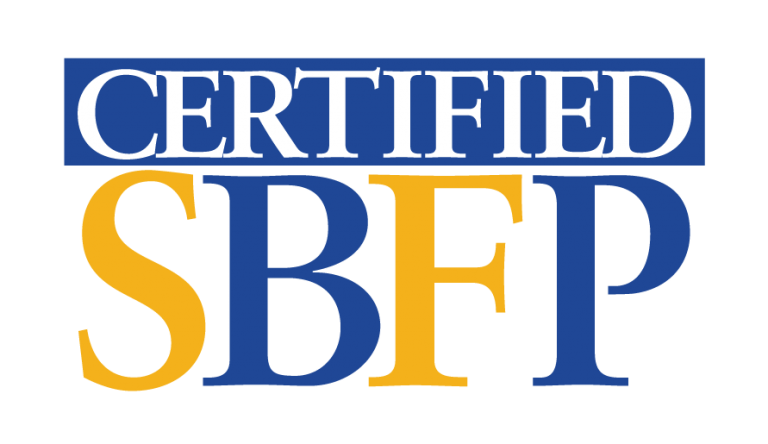 Its aim is to become an industry standard. The newly launched Certified Small Business Finance Professional (CSBFP) program will first become available at Broker Fair in New York City on December 6th.
Its aim is to become an industry standard. The newly launched Certified Small Business Finance Professional (CSBFP) program will first become available at Broker Fair in New York City on December 6th.
But what’s the difference between this one and others? Steve Denis, Executive Director of the Small Business Finance Association (SBFA), says that his organization’s backing of the CSBFP makes all the difference.
“We’re the largest trade group in the space without question,” Denis said, adding that the group has about 30 members, several of which are among the largest in the country.
“It’s going to be a signal that you’re doing things the right way and want to go out of your way to show that you are doing things the right way,” Denis said.
The certification will require applicants to complete a course centered on understanding products, laws governing the industry, and compliance. The certification exam will focus on testing applicants’ ability to understand key concepts and best practices.
This course is designed to be taken in person. While it will be available at Broker Fair, Denis said that they plan to partner with other events as well.
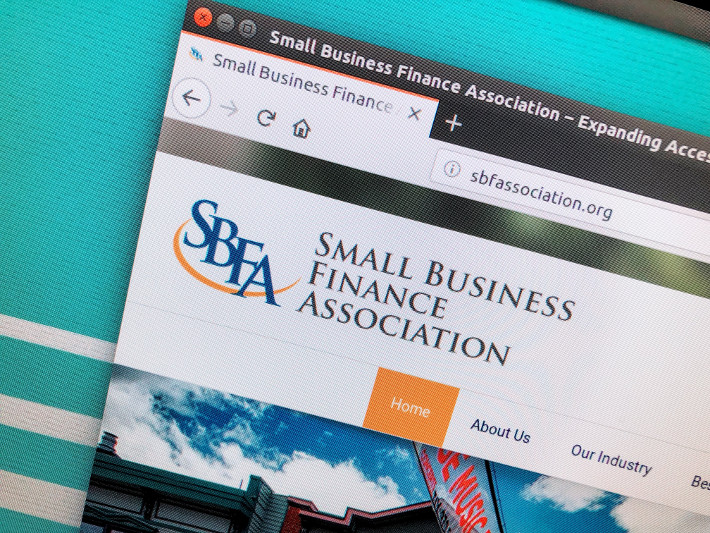 “We’re going to focus on as many in-person training sessions as possible,” he said.
“We’re going to focus on as many in-person training sessions as possible,” he said.
And it’s not just salespeople they’re targeting. Underwriters, collectors, support staff, and more are not only all welcome to obtain their certification, but are also encouraged.
“It’s open to anyone in the industry,” Denis said. “The more the better. […] It will send a very strong message that there is a diverse group of people that want to take a certification and take it very seriously.”
In the official announcement, it was stated that it would be more than just a stamp and that certified professionals would also be provided with “a way to connect, learn and grow beyond the initial education process.”
Denis compared the CSBFP standard to CFPs (Certified Financial Planners) in the financial advisor space.
Attendees of Broker Fair 2021 can take the course at the event at no extra charge.
MJ Capital Now Alleged to Be $200M+ Ponzi Scheme
November 22, 2021 Ever since the SEC sued MJ Capital Funding, LLC in August, more information has been revealed about the potential size and scope of the alleged fraud. It was originally estimated that between $70M – $129M was raised by MJ Capital from over 2,150 investors. But now with access to the books and records, investigators believe it is much much higher.
Ever since the SEC sued MJ Capital Funding, LLC in August, more information has been revealed about the potential size and scope of the alleged fraud. It was originally estimated that between $70M – $129M was raised by MJ Capital from over 2,150 investors. But now with access to the books and records, investigators believe it is much much higher.
“From the Receiver’s preliminary investigation, it appears that at least 5,500 investors were induced by Johanna Garcia and over 400 promoters to invest as much as $200,000,000 in this Ponzi scheme,” Court filings state.
If true, that would likely make it the largest fraud in the industry’s history. And it’s been a mess trying to recover the funds, it seems.
“Though several individuals have agreed to return funds and other assets to the Receiver, many others have not, and several continue to mislead the victims by counseling them not to register their claims on the Receiver’s website and advising them that the Receivership Defendants’ business will reopen and that is how they will be repaid.”
The loyalty that many investors feel towards MJ Capital’s former CEO is evident by the raw number of signatures attached to a Change.org petition to offer her sympathy and support. 3,243 names say they support her and her mission to unfreeze the money, which is not going to happen.
Those impacted appear confused as to why the company is in trouble in the first place simply because checks were still being sent out to investors at the time the SEC action took place.
The Receiver says that it’s because MJ Capital “had little in the way of actual MCA business, and could not possibly sustain the promised repayments to investors plus the ‘referral fees’ to promoters. Rather, they were paying these amounts with funds raised from new investors, in classic Ponzi scheme fashion.”
In other words, the checks were bound to stop coming eventually, because there was no actual underlying business.
The alleged fraud is now so large that the SEC has asked the Court for time to file an amended lawsuit. The judge has given them until February to file the documents.
ConstitutionDAO NFTs
November 20, 2021If NFTs can be used to capture a moment or experience, then there should be some already available to showcase the current state of the movement. Here are some that we have found:
IOU Financial Originates $52.2M in Q3
November 19, 2021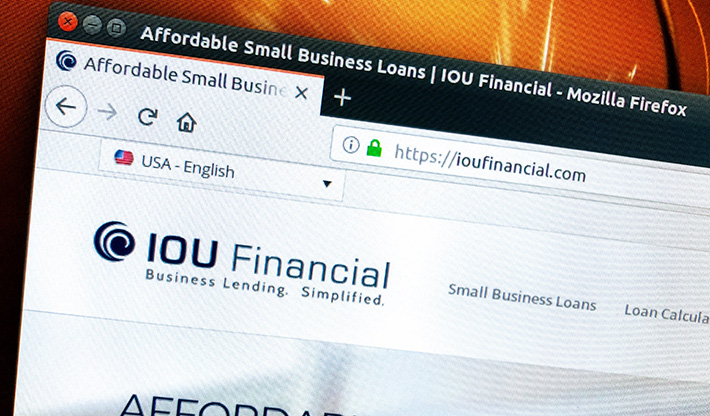 IOU Financial continued its growth trajectory this past quarter with $52.2M in small business funding originations. It was the company’s biggest month since inception.
IOU Financial continued its growth trajectory this past quarter with $52.2M in small business funding originations. It was the company’s biggest month since inception.
“Our successful migration to a marketplace strategy has enabled IOU Financial to capture more volume in Q3 than would have previously been possible,” stated Robert Gloer, President and CEO in an official statement. “This has proven to be a win-win that has in turn given us the financial latitude to invest in growth initiatives and further reduce our corporate debt.”
The company was also profitable in Q3, though the company said this was “due in part to a reversal in its provision for loan losses and recoveries of loans previously written off, as well as a reduction in operating expenses due to the recognition of $1.5 million in employee retention credits.”
IOU’s customers have been in business for an average of 11.5 years and borrow $82,688 on average for a weighted average term of 11.9 months.
For the first 3 quarters of 2021, the company has originated $111.9M.
Private Lender Expo Shows The State of Real Estate Investing Industry
November 19, 2021 “We’re here because we’re looking to see if we can branch into real estate lending,” said Porsche Brooks, CEO of Brooks Partners Finance, a company that provides a suite of funding services that include both MCAs and SBA loans.
“We’re here because we’re looking to see if we can branch into real estate lending,” said Porsche Brooks, CEO of Brooks Partners Finance, a company that provides a suite of funding services that include both MCAs and SBA loans.
Brooks was one of many that attended the Private Lender Expo in Atlantic City on Thursday, where financiers, developers and more talked heavily about apartment complex and suburb-centric commercial real estate development.
“There are opportunities here,” said Brooks. “We’re really looking to expand.”
While there was evidence of fintech making its way through the space, companies providing document-digitizing software were hesitant to label themselves as fintech companies.
A representative from CoStar, a technology-centric real estate information company, called themselves “fintechy” but made it clear that they are only looking to function within the current space, not revolutionize it.
Those who hosted booths at the event showed little interest in expanding business operations into small business financing as a way to grow their lending options. As real estate investments continue to pay hefty dividends, lenders who focus on that area aren’t looking to dilute their effort into other ventures.
“Small business lending can be such a headache,” said one real estate investment company representative when asked if they would ever venture outside of their investment property exclusivity into funding merchants. “The amount of money in real estate right now is evident all around us. There’s always a lot of people at stuff like this that will give you a million dollars, but now this stuff is becoming all real estate.”
Congress Introduces New Restrictive Small Business Financing Bill
November 19, 2021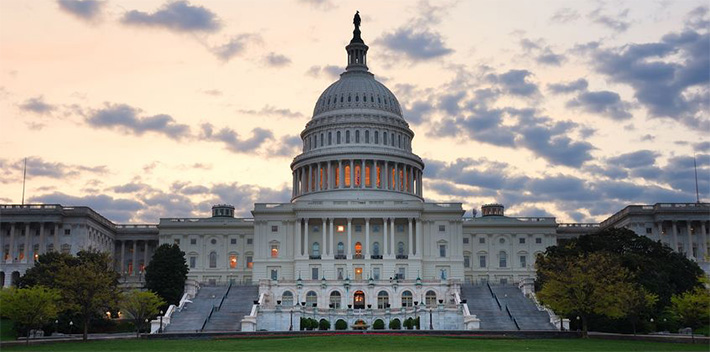 A new bill introduced by Rep. Nydia M. Velázquez, the Chairwoman of the House Small Business Committee, and Senator Robert Menendez (D-NJ), hopes to “stop predatory small business loans” by applying broad consumer protections to small business borrowers nationwide.
A new bill introduced by Rep. Nydia M. Velázquez, the Chairwoman of the House Small Business Committee, and Senator Robert Menendez (D-NJ), hopes to “stop predatory small business loans” by applying broad consumer protections to small business borrowers nationwide.
This would be done by including small businesses as a covered party under the already existing Truth in Lending Act (TILA).
The proposal, if successful, would arguably become more restrictive than New York’s recently passed commercial financing disclosure law.
Among the supporters of the bill are LendingClub and Funding Circle. No republican members of congress are listed among the sponsors in the official announcement.
The bill is similar to one introduced last year that failed to advance, the Small Business Lending Disclosure and Broker Regulation Act of 2020. That bill never made it out of the House Financial Services Committee. The makeup of Congress now, however, is different than it was last year.
So We Didn’t Buy The Constitution
November 18, 2021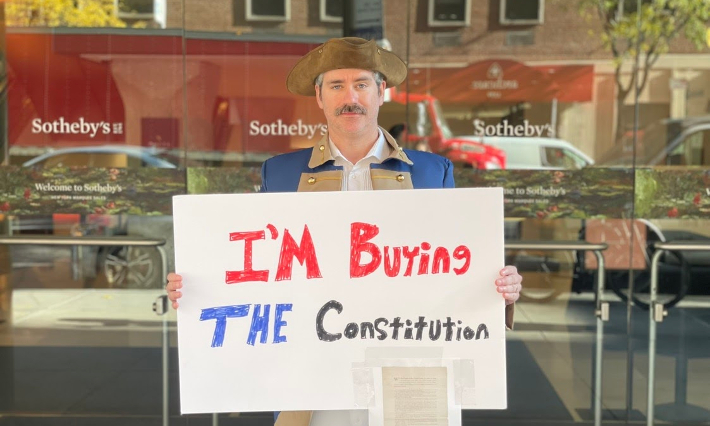 An internet movement started last week to buy one of the only remaining original copies of the United States Constitution reached a roaring climax on Thursday night and then descended into chaos and confusion as almost no one seemed to know what the outcome was, how auctions work, who was bidding on the movement’s behalf, or anything at all.
An internet movement started last week to buy one of the only remaining original copies of the United States Constitution reached a roaring climax on Thursday night and then descended into chaos and confusion as almost no one seemed to know what the outcome was, how auctions work, who was bidding on the movement’s behalf, or anything at all.
Several news outlets reported that the Decentralized Autonomous Organization, aka DAO (pronounced “Dow”), representing the internet movement, had won, including the crypto-focused outlet Coindesk. The DAO raised approximately $47 million via ethereum contributions in a matter of just days from a total of more than 17,437 people who joined in (yours truly included). Knowing that, most people were lured into believing that the winning bid of $43.2 million had to have been the DAO. Unfortunately, the contributors seemed largely unaware of the hefty fees charged on top by Sotheby’s, the 8.875% sales tax, and more. I wrote about this two days prior.
This snafu seems to have been expected by those skeptical of an internet movement. Having actually stood outside of Sotheby’s earlier in the day in full George Washington-esque garb, I was asked by someone seemingly connected to a bidder if the DAO was aware of the added fees. I told them what I knew, but I couldn’t speak in the affirmative for the other 17,436 people.
Having also crossed paths with Julian Weisser, however, a Core team member and nice fellow, it was clear that he was extremely knowledgeable about all the details involved. Weisser was also the first team member to officially announce the loss on the discord.
“@everyone – We did not win the bid for the copy of the U.S. constitution.
While this wasn’t the outcome we hoped for, we still made history tonight with ConstitutionDAO. This is the largest crowdfund for a physical object that we are aware of—crypto or fiat. We are so incredibly grateful to have done this together with you all and are still in shock that we even got this far.
Sotheby’s has never worked with a DAO community before. We broke records for the most money crowdfunded in less than 72 hours. We have educated an entire cohort of people around the world – from museum curators and art directors to our grandmothers asking us what eth is when they read about us in the news – about the possibilities of web3. And, on the flip side, many of you have learned about what it means to steward an asset like the U.S. constitution across museums and collections, or watched an art auction for the first time.
We had 17,437 donors, with a median donation size of $206.26. A significant percentage of these donations came from wallets that were initialized for the first time.
You will be able to get a refund of your pro rata amount (effectively minus gas fees) through Juicebox. Please expect more details from us about this tomorrow – our team has not slept in the past week, and we are giving people the night to get some rest before we’re back at it tomorrow AM.
Every one of you were a part of this. We want to also thank our partners in this work: Alameda Research, Endoament, FTX US, Juicebox, Morning Brew, and SyndicateDAO”
 Once the results finally started to kick in, feelings were mixed. Discord members were torn between feeling completely bamboozled or excited to use a DAO to make some other kind of meaningful purchase. The leadership behind the organization’s official twitter account signed off for the night early after working around the clock for about a week to even put the entire thing together.
Once the results finally started to kick in, feelings were mixed. Discord members were torn between feeling completely bamboozled or excited to use a DAO to make some other kind of meaningful purchase. The leadership behind the organization’s official twitter account signed off for the night early after working around the clock for about a week to even put the entire thing together.
gn everyone we’ll be back tomorrow
thanks for all your love and support. can’t wait to shape the next leg of this journey with you all 🙂 🌙 📜 https://t.co/Vhtiglpntg
— ConstitutionDAO (📜, 📜) (@ConstitutionDAO) November 19, 2021
By any measure, the dollars involved were astounding. This particular copy of the Constitution last sold in 1988 for the price of $165,000. Sotheby’s pegged the current value at $15 – $20 million. With $47 million in hand, winning seemed a strong possibility. The one major problem, however, is that with the blockchain being a public ledger, the rival bidder already knew the DAO’s best bid.
Overall, it was a rather strange experience, no doubt made more unusual by my throwing down eth and then donning a costume on the Upper East Side of Manhattan to the bewilderment of many locals.
Was this ultimately a loss for crypto or still a win? Only time will tell…





























